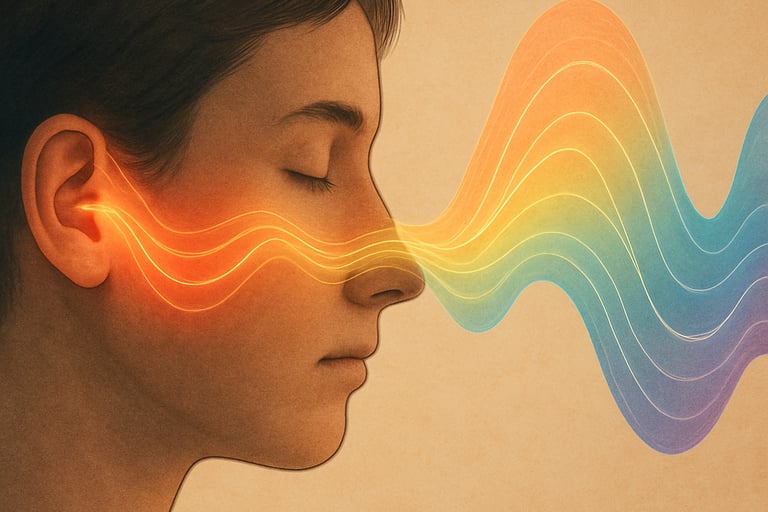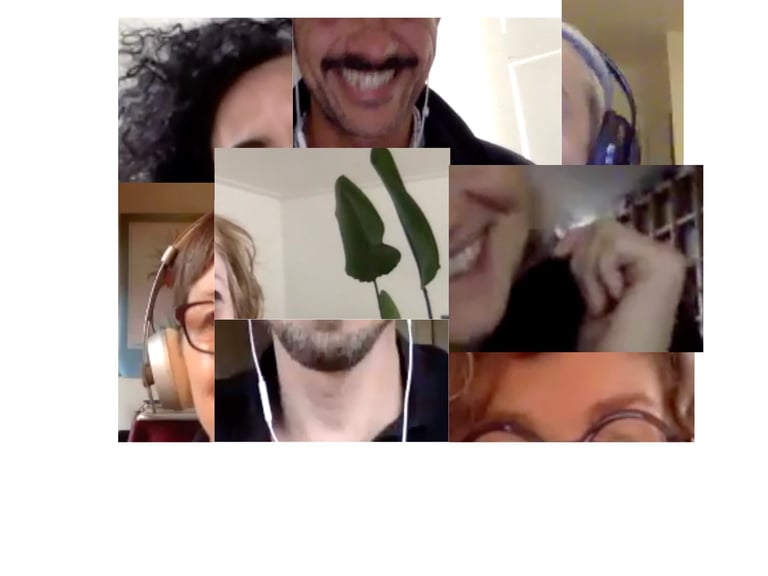Practicing Withness
Lines of Listening: A Somatic Series on How We Hear, Move, and Understand
Mike O'Connor
5/27/20253 min read
In this series, I’ve written about listening not as a passive act, but as something physical — something that moves. We’ve traced the lines of listening, its stretches and folds, its loops and interruptions. We’ve looked at how listening becomes a site for creativity, conflict, bending, blending, and difference.
Now we arrive at the simplest, and maybe hardest part: practice.
To listen with withness — a term used by philosopher John Shotter — is to stay close to what is happening as it happens. It’s not listening about a person or idea, but listening with it. With the moment, the space, the mood, the breath. It’s staying in relationship, even when meaning is incomplete or language falters.
In movement practice, we often say “notice what moves you.” In listening, the same is true. What shifts in your body when you really attend to someone — without interrupting, fixing, or analyzing? Where does your attention stretch? Where does your breath catch? What folds inside you?
Withness is not agreement. It’s a temporary understanding made from the situation. It’s the willingness to remain alongside — to not leave the moment just because it’s unfamiliar or unresolved. Here are two simple practices for exploring withness in your own body and relationships. They don’t require a workshop or a retreat, but they might just shift the way you relate — not only to others, but to yourself.
Practice 1: Listening With Your Body
Find a quiet moment. Sit or stand somewhere you can relax. Now listen to the room you’re in — not just the sounds, but the space between them. The way your body responds to quiet. The way your shoulders hold or soften. What sensations appear?
Let your listening be a stretch — like a dancer reaching. Then notice the fold — the place in you that adjusts in response. Maybe it’s a sigh, a tension, a shift of weight.
Ask yourself:
“What moves in me as I listen?”
“What do I reach toward — and what folds back?”
This practice trains you to sense listening not as a task, but as a motion. Over time, you might notice that listening begins before words are even spoken.


Practice 2 The Felt Geometry of Listening
Let someone speak for a minute. Or listen to a recording of someone talking. As you listen, don’t focus on the literal meaning of their words. Instead, pay attention to what arises in your mind’s eye or your body.
Do you see images, shapes, or colors?
Do you feel a direction, weight, or texture?
Is there a sensation like being pulled, pushed, drifting?
Don’t try to interpret or respond. Just let your body and imagination track what the communication feels like, not just what it says.
Afterward, reflect:
“What kind of line was that?”
“Where did I go while listening?”
“Did I feel close, distant, curved, tangled, still?”
This practice draws on the idea of imagined lines — the invisible arcs we follow in thought, memory, and embodied perception. For some, this is how meaning forms: not in decoding the logic of words, but in sensing the emotional geometry beneath them.
Why This Matters
In group settings — whether at a retreat, in a team, or in a relationship — we often rush to fix, react, or resolve. But so much of transformation happens in the pause. In the moment before we respond. In the space where listening reshapes our internal landscape.
Listening with withness means trusting that something is already happening, even when we don’t speak. It honors that communication isn’t always logical, linear, or efficient. Sometimes it’s slow. Sometimes it loops. Sometimes it folds.
But it always moves.




